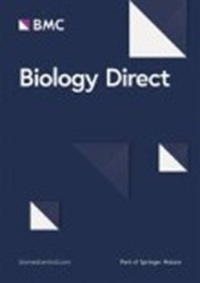Pharmacological inhibition of mTORC1 reduces neural death and damage volume after MCAO by modulating microglial reactivity
IF 5.7
2区 生物学
Q1 BIOLOGY
引用次数: 0
Abstract
Ischemic stroke is a sudden and acute disease characterized by neuronal death, increment of reactive gliosis (reactive microglia and astrocytes), and a severe inflammatory process. Neuroinflammation is an early event after cerebral ischemia, with microglia playing a leading role. Reactive microglia involve functional and morphological changes that drive a wide variety of phenotypes. In this context, deciphering the molecular mechanisms underlying such reactive microglial is essential to devise strategies to protect neurons and maintain certain brain functions affected by early neuroinflammation after ischemia. Here, we studied the role of mammalian target of rapamycin (mTOR) activity in the microglial response using a murine model of cerebral ischemia in the acute phase. We also determined the therapeutic relevance of the pharmacological administration of rapamycin, a mTOR inhibitor, before and after ischemic injury. Our data show that rapamycin, administered before or after brain ischemia induction, reduced the volume of brain damage and neuronal loss by attenuating the microglial response. Therefore, our findings indicate that the pharmacological inhibition of mTORC1 in the acute phase of ischemia may provide an alternative strategy to reduce neuronal damage through attenuation of the associated neuroinflammation.药理抑制 mTORC1 可通过调节小胶质细胞的反应性减少 MCAO 后的神经死亡和损伤量
缺血性脑卒中是一种突发性急性疾病,其特征是神经元死亡、反应性胶质细胞增多(反应性小胶质细胞和星形胶质细胞)以及严重的炎症过程。神经炎症是脑缺血后的早期事件,其中小胶质细胞起着主导作用。反应性小胶质细胞涉及功能和形态变化,可驱动多种表型。在这种情况下,破译这种反应性小胶质细胞的分子机制对于制定保护神经元和维持受缺血后早期神经炎症影响的某些脑功能的策略至关重要。在这里,我们利用小鼠急性期脑缺血模型研究了哺乳动物雷帕霉素靶标(mTOR)活性在小胶质细胞反应中的作用。我们还确定了缺血损伤前后雷帕霉素(一种 mTOR 抑制剂)的药理作用。我们的数据显示,在脑缺血诱导之前或之后服用雷帕霉素,可通过减轻小胶质细胞的反应来减少脑损伤的体积和神经元的损失。因此,我们的研究结果表明,在脑缺血的急性期对mTORC1进行药物抑制可能是通过减轻相关神经炎症来减少神经元损伤的另一种策略。
本文章由计算机程序翻译,如有差异,请以英文原文为准。
求助全文
约1分钟内获得全文
求助全文
来源期刊

Biology Direct
生物-生物学
CiteScore
6.40
自引率
10.90%
发文量
32
审稿时长
7 months
期刊介绍:
Biology Direct serves the life science research community as an open access, peer-reviewed online journal, providing authors and readers with an alternative to the traditional model of peer review. Biology Direct considers original research articles, hypotheses, comments, discovery notes and reviews in subject areas currently identified as those most conducive to the open review approach, primarily those with a significant non-experimental component.
 求助内容:
求助内容: 应助结果提醒方式:
应助结果提醒方式:


